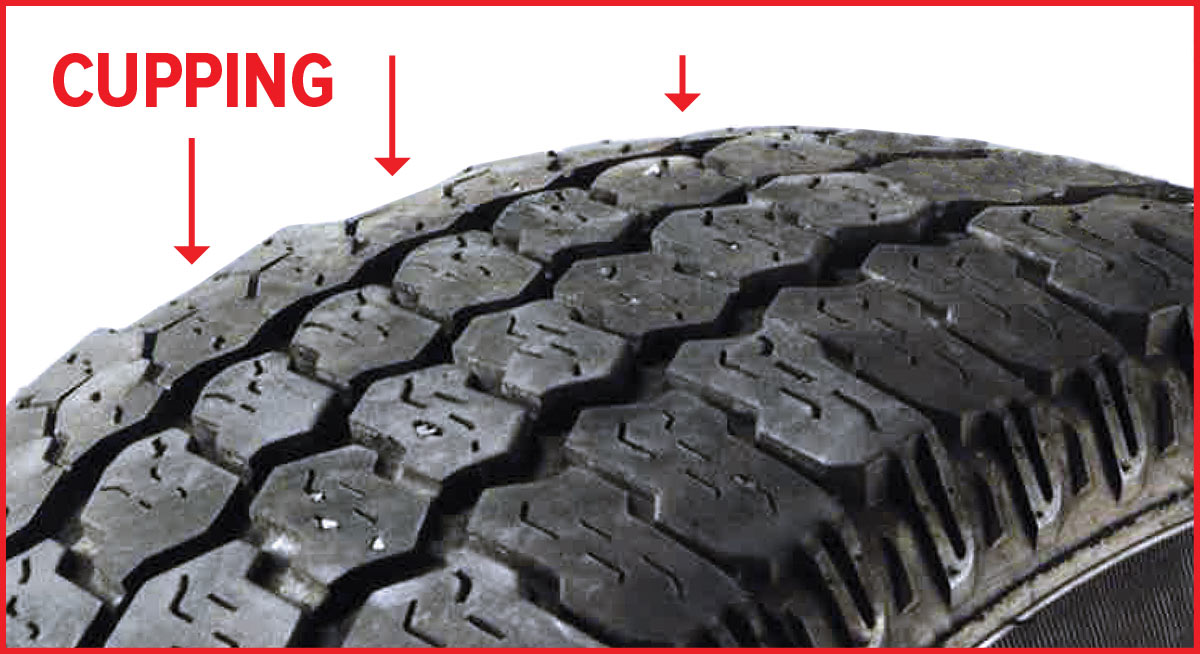Having a car with a tire belt broken is something no one wants. This can happen to anyone who owns a car. So how to tell if a tire has a broken belt? How long do timing belts last? This article will help you understand the tire belt separation symptoms and how to handle this situation.
Table of Contents
Bad Tire Belt SymptomsThere are many broken tire belt symptoms. This article will help you recognize the exact signs when your tire belt has any abnormality. As a result, you can get your car repaired in time, ensuring the durability of your vehicle as well as your safety.
The NoiseWhat does a broken tire belt sound like? Loud noises are probably the most obvious sign of a tire belt broken. If you are traveling at high speed and notice your tires squealing loudly, there is a high chance your tires are starting to separate.
It sounds scary, doesn’t it? When the tire belt separation noise happens, do not attempt to repair it yourself or use a replacement tire. The longer it is left, the more and more severe the shaking occurs.
Tires may start to bounce or come apart. Tire belts broken is also one of the causes of increased tire wear, effectively reducing friction with the road surface. Moving on slippery, winding roads, or under bad weather such as too much rain or snow will become very difficult and dangerous.
The only thing that you can do is take the car in for repair immediately because if you insist on going, it spares too much room for things to go wrong. Only a new tire can solve the tire separation.
The ShapeYou can tell when a tire belt is broken or damaged by the change in the shape of the tire. When there is a problem, you have to stop moving and look from the outside to see if your tires have changed in shape or not. Then pay attention to possible cracks, tread wear, and spacing.
A tire is split when there is a change in the internal structure of your tire. If not handled in time, they can separate from the outer tire.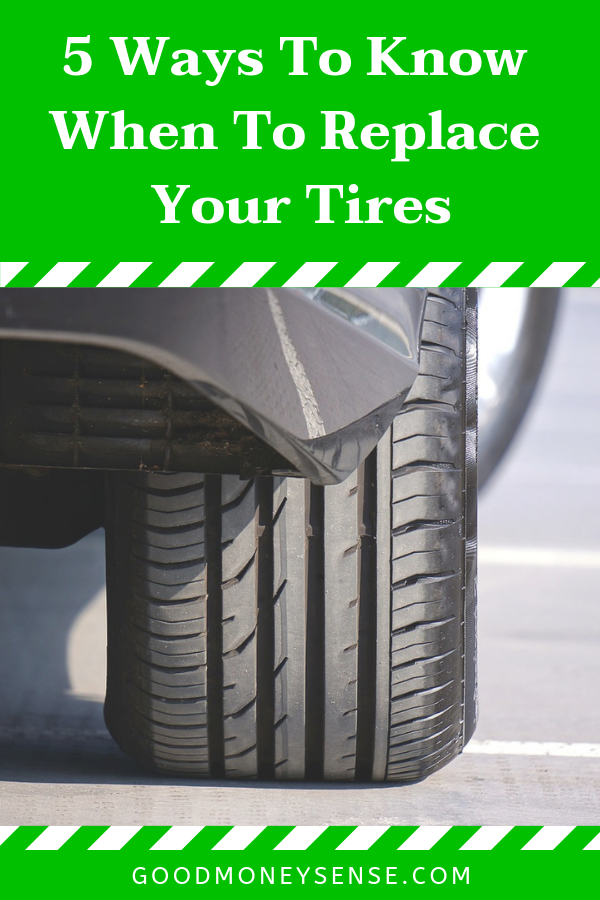 The tread of the tire will peel off from its inherent internal structure.
The tread of the tire will peel off from its inherent internal structure.
When it leaves its place, bumps on the tire will appear and create an irregular shape of the tire. This separation poses a danger to you, significantly reducing the handling and traction.
In such a case, if you are in an area where there are no people or buildings around, make a temporary fix by using a spare tire. Then, drive immediately to the nearest garage to get timely car repair support from experienced people. It is best to replace the tire with a new one then.
The VibrationSome car owners had reported that when they had a tire broken belt, their steering wheel began to shake violently, making it hard to ensure the tire broken belt safe drive. It is one of the signs to know that your tires are in trouble, and it is likely that you are riding in a vehicle with a damaged tire belt.
In fact, the shaking of your steering wheel can also be due to a few reasons such as an imbalance of the tires, a problem with the internal system of the car, or the adjustment of parameters is not appropriate, etc.
Therefore, instead of worrying too much, you should invest in a car repair promptly before the symptoms become worse and damage your car.
What causes broken belt in tire?There are a few causes of broken belts in tires that you should be aware of so that you can provide timely solutions when encountering this situation. Let’s find out the three biggest reasons listed below.
Tire DefectsYou might say that it is impossible that your new car has a bad tire, right? But it is true and is a very common mistake in car production today.
During the manufacturing process, technicians can make errors. The treads that do not adhere to the tire casing or the treads with spacing problems will lead to the tire not performing well.
This is a very dangerous problem and you need to contact the supplier immediately to address the problem or to exchange for another car. In this case, you will most likely receive compensation because of the manufacturer’s fault.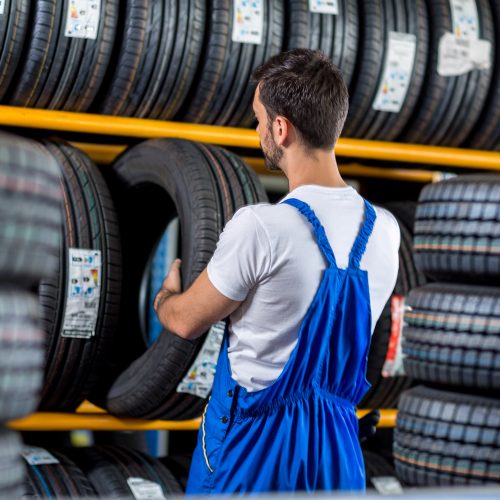 Defective tire belts
Defective tire belts
A car that goes for a long time without maintenance will have a lot of problems, especially tire-related ones. Due to its frequent exposure to many different types of terrain, the tire belt can be broken when overcoming obstacles on the way.
Those obstacles include bumpy roads, slippery roads, roads with many cracks, to name a few. Your tire’s life span will tremendously degrade if you go through these rough terrain.
If you drive at high speed on such roads, we’re sure that your tires will end up in the dump soon. Continuous use and lack of maintenance will cause a rapid breakdown, not only with tire belts but also with other vehicle components.
Tread SeparationThe upper part of this article reiterates a lot about tread separation because of its seriousness. On each tire, there are grooves and veins, and the manufacturer has designed them logically and scientifically to help the wheel have enough friction when coming into contact with the road surface.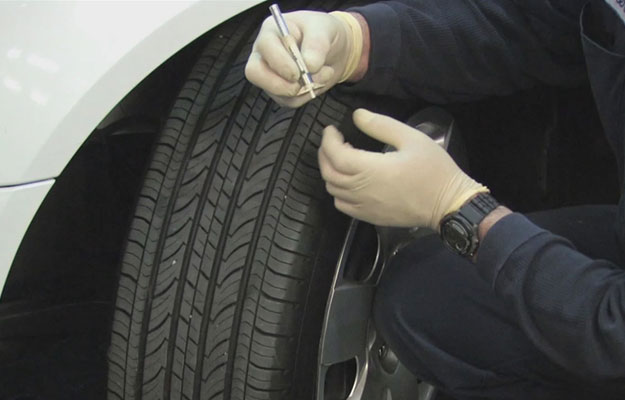
Without grooves and veins, the tires will be slippery and can slide, causing danger to you, especially when you ride at high speed or encounter obstacles on the road. You may lose control of your vehicle.Tire Separation
Tire WearYour vehicle may experience tire separation if it has bad tire wear. Tires also have an odometer. If you ignore the number displayed on this meter and continue to use the vehicle, it may lead to damage to your tire rims.
Knowing how many kilometers your car has traveled is essential because you will know if you need to bring your car in for warranty service. The manufacturer also recommends that car users should pay attention to this parameter to ensure that their vehicle is operated smoothly and safely.
You should prepare yourself a tire checker tool, specifically your tread. When using this tool, you will know the degree of wear of the tires and the condition of the treads.
This checkup is especially important as it will tell you how much friction your wheel has with the road surface.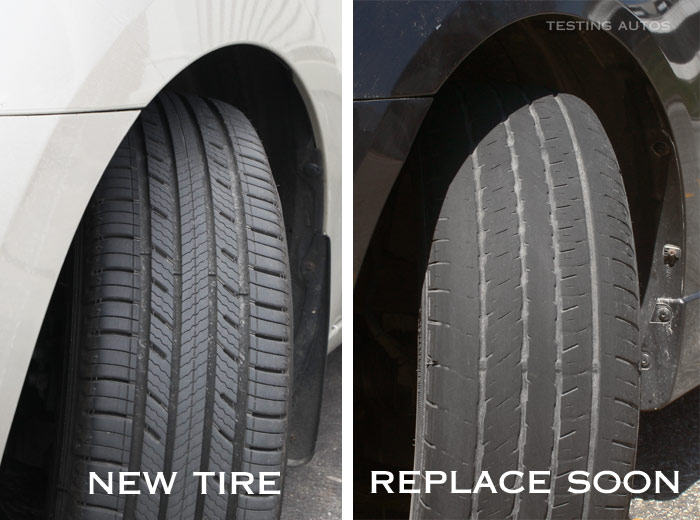 If not checked regularly, a thin tire will lead to a split in the tire, or a rupture of the belt, becoming very vulnerable to external influences.
If not checked regularly, a thin tire will lead to a split in the tire, or a rupture of the belt, becoming very vulnerable to external influences.
One thing you should know is that most manufacturers do not make their own tire belts but hire an outside supplier to make them.
The essence of the belts in the tires are steel ropes, which keep the tire’s shape unchanged when riding on flat terrain and reduce the impact when riding on bad, uneven terrain.
The manufacturer will use multiple layers of rubber to protect these steel straps. The stronger the tire belt, the more durable the tire will be.
However, while these belts are of particular importance to the vehicle, it is inevitable that they will sometimes have a manufacturing defect, especially when there is a third party to take care of these belts.
Any error in the process, such as choosing poor quality steel wire, unqualified rubber layers to protect the belts, will directly affect the quality of the tire belt.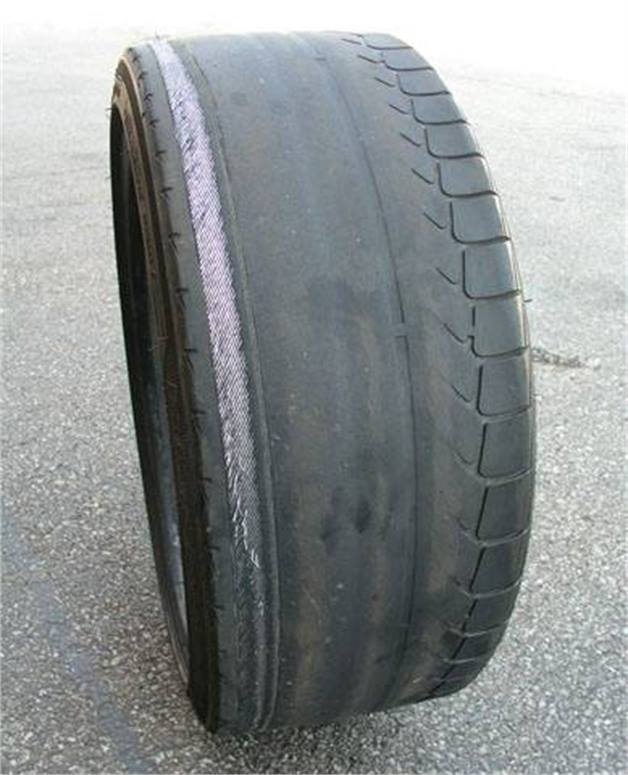
As a user, you need to thoroughly understand the manufacturing process before buying a car. You should ask the seller for relevant information about your vehicle and test drive to make sure everything works fine.
Driving Time On A Broken Tire BeltHow long will a timing belt last? As mentioned in this article, you should not drive when your tire belt is broken. So, to the question of how long you can keep driving in such a situation, there is no definite answer.
Driving Time On A Broken Tire BeltOnce the belt has a problem, your tires can come off at any moment. But before that, the situation of tire blowing will happen, and the possibility of losing control will be very high.
It is hard to provide the proper answer to the question “How long does a timing belt last?” To avoid dangerous situations, the advice for you is to work hard to check your car regularly for any problems. Visually check the exterior first and get help from a technician when you bring it to the repair facility.
Make sure you don’t go cheap and buy yourself a poor-quality tire. Using a car with cheap tires will be extremely dangerous because you cannot know in advance what obstacles you will encounter on the road. They cannot protect you from accidents.
ConclusionThrough this article, make sure you know the basic signs and effects of a car with a tire belt broken. Any unusual problem that occurs with a vehicle is worth noting because it directly affects your safety.
There is no accurate answer to the question: how long does timing belt last? Therefore, you should check your car regularly for the engine, internal parts, fuel, tires to detect abnormalities as soon as possible.
As soon as you realize that your car has a problem, contact the manufacturer as well as the automotive repair shop for timely support. Even if there are no problems, regular car maintenance is essential and advised.
Even though you are unable to always know if the tires you are using are indeed correct, some issues such as tire cupping, feathering, broken belts, or punctures are a clear sign that something has gone wrong and needs either replacing or fixing.
What's In This Guide?
As mentioned in the intro, a defective tire is one that is both unsafe and uncomfortable. This means that you should focus your attention on weird noises, inconsistent shapes, increased levels of vibrations, and shaky steering as these are typically associated with broken tire belts.
These are commonly caused by manufacturing defects, incorrect installation, overinflation, tire wear, and aggressive driving. You need to be aware that fixing a broken belt is impossible. As such, be sure to invest in a new tire as you never want to compromise when it comes to on-road safety.
The two most common symptoms of broken tire belts are both squealing and thumping noises. Tire-thumping noises are apparent both while driving fast and while driving slowly. The thumping sounds are caused by the tire jumping a little while driving. The area in which the tire has been compromised the most is likely going to hit the surface a lot harder, and that is what causes the thump.
Tire-thumping noises are apparent both while driving fast and while driving slowly. The thumping sounds are caused by the tire jumping a little while driving. The area in which the tire has been compromised the most is likely going to hit the surface a lot harder, and that is what causes the thump.
A slipped tire belt can sometimes be noticed if you hear squealing noises coming from your wheel well areas. These can mean many different things, but if they are accompanied by other symptoms from this list, chances are that your tire belts are done.
Why Is My Tire Inconsistent In Shape?There are a few different types of tire inconsistencies that indicate several different problems. If the tire has more tread on one side than the other, you are likely experiencing uneven tire wear. If the tire has a large bubble on it, you are experiencing tire bubbling.
However, if the tire seems to be filled with numerous tiny bumps while also experiencing other symptoms from this article, it means your tire belts are on their last legs. Either way, if you experience any defects listed in this paragraph, be sure to ask for professional assistance immediately.
Either way, if you experience any defects listed in this paragraph, be sure to ask for professional assistance immediately.
There are two different ways how one can notice issues with the tire belts while behind the wheel. The first and the most obvious one is the vibration that is translating from the tires to your steering wheel. This happens because the steel belt is designed to maintain the shape of the tire, and if it breaks, the tire becomes uneven and it thus vibrates, especially at lower speeds.
You can also notice issues with the tire belt if the steering is vague and rather shaky. Whenever a tire loses its structural integrity, it causes the car to pull to one side or the other which means that steering precision is also greatly affected. If the belts are completely broken, you might potentially lose complete steering control.
Believe it or not, one of the most common causes of a broken tire belt is a manufacturing defect. More precisely, when the steel belt has not properly settled into its tire casing, it usually starts moving around which often leads to the belt snapping. Furthermore, sometimes these can be traced to improper chemical mixtures that fail to properly bond together the layers of the tire.
More precisely, when the steel belt has not properly settled into its tire casing, it usually starts moving around which often leads to the belt snapping. Furthermore, sometimes these can be traced to improper chemical mixtures that fail to properly bond together the layers of the tire.
These typically manifest early on which means that you should contact the tire manufacturer/reseller and ask for compensation. Many tire makers offer dedicated warranties against tire manufacturing defects, but you need to act fast.
Can Incorrect Tire Installation Cause Broken Tire Belts?Even though incorrect installation could result in the tire belt snapping, these are not all that common. If you mount the tire at a wrong angle, it can cause uneven wear. Uneven wear means that one side of the tire is tasked with distributing the entire weight of the car which can cause structural damage in the long run.
Can Overinflation Cause Broken Tire Belts?There is an obvious correlation between the rigidity of the tire and the inflation of the tire.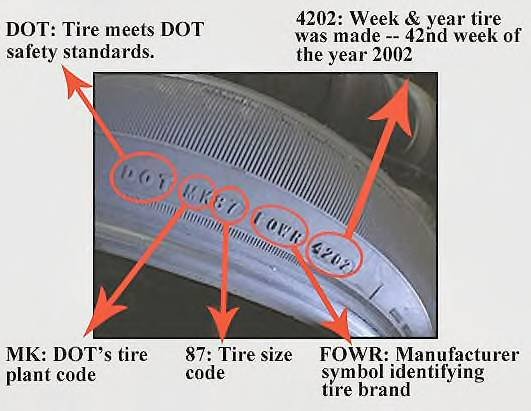 If you underinflate a tire, you are essentially making it softer which increases shock absorption. On the other hand, if you overinflate it, you are making it more rigid which decreases the shock absorption.
If you underinflate a tire, you are essentially making it softer which increases shock absorption. On the other hand, if you overinflate it, you are making it more rigid which decreases the shock absorption.
As such, a tire that is too rigid is unable to absorb sudden impacts caused by aggressive potholes which can lead to the tire belt snapping.
Can Tire Wear Cause Broken Tire Belts?A worn-out tire is nobody’s friend, so everything is possible. When a tire reaches the end of its lifetime, it loses the ability to perform even in the most benevolent situations. Moreover, if a tire is completely bald, there is a great chance that the steel belts might come in contact with the road directly which typically leads to a complete tire blowout.
The most common occurrence whenever the belts themselves contact the road is that they tend to heat up and subsequently fail. It comes as no surprise that an old tire is useless, so be sure to always keep an eye out on the state of your tires.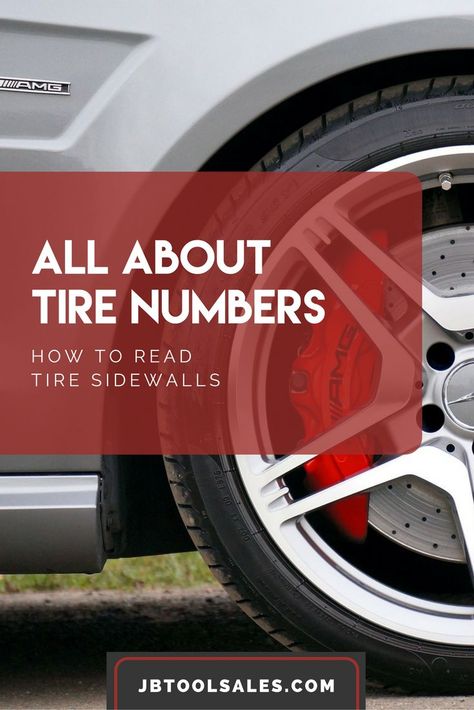
Aggressive driving can cause all sorts of issues, and one of those issues is also a broken tire belt. The fact of the matter is that whenever you drive fast, you are putting a lot of pressure on your tires to withstand all the challenges that come with fast driving. For starters, the tire temperature soars which means that it tends to become softer.
Whenever you enter a corner fast, the entirety of the tire flexes and deforms itself which puts a lot of strain on your belts. If the tire is not a dedicated performance tire, you should not push it to its limits, otherwise, it is going to cause issues.
Ignore what anyone else says because currently there are no decisive ways how one can fix a tire with a broken belt. During the manufacturing process, the belts are embedded within the tire in a strict and precise manner which means when a tire separates, no one is able to put it back together.
Chances are that most of these defects occur due to a manufacturing defect which means that all the other causes are not as relevant. This is a good thing because most tire manufacturers/resellers do offer warranties against all sorts of manufacturing defects.
It really does not get any more dangerous than this, and you should never drive a car with exposed tire belts. A broken belt is only a time bomb just waiting to blow which means that it can damage your car and everyone around you. Furthermore, if that happens while cruising at highway speeds, it could potentially even end up catastrophically.
No one can say for certain how long a tire belt can last because a tire belt defect is not as simple as tire tread and tire cord defects are. The best you can do is inspect the tire for any signs of belt trouble.
The steel belt is not an expendable part of the tire which means that it can not be adjusted or altered in any way.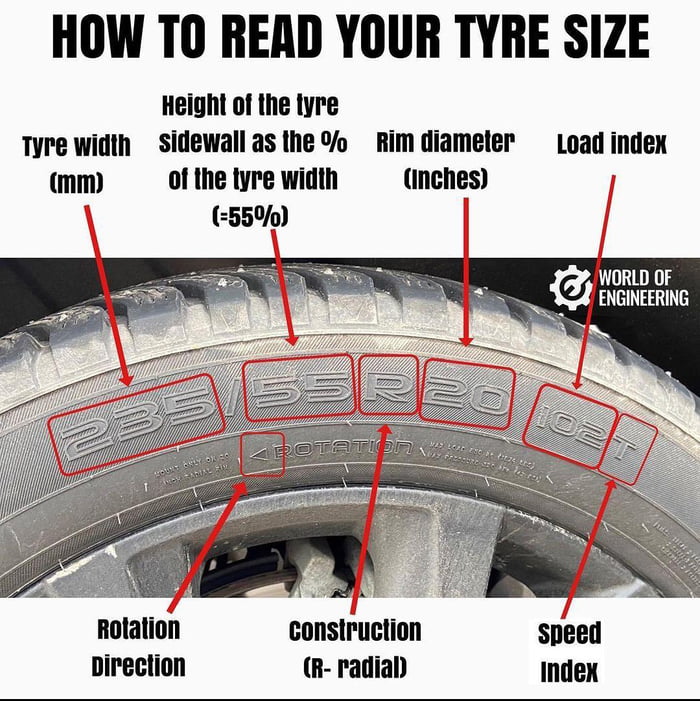 When the belt snaps, it’s over, get rid of the tire and get yourself a new one.
When the belt snaps, it’s over, get rid of the tire and get yourself a new one.
A broken tire belt certainly isn’t something anyone wishes to experience. However, if that does indeed happen, be sure to focus your attention on how the car drives, on all the noises coming from the tires, and the vibrations that will inevitably follow. It’s crucial for you to always be able to recognize the early warnings that something might be wrong with the tire, otherwise you could find yourself in a bad situation.
As stated above, a defective manufacturing process is the most frequent cause of a faulty tire belt while others such as incorrect installation, overinflation, aggressive driving, and good old tire wear are not as prevalent, but are still possible.
Fixing a broken tire belt is impossible as tires are expendable assets. Just go ahead and get yourself some fresh rubber and don’t attempt to mend a tire with a broken belt.
Among drivers, one serious mistake is common - insufficient attention to the alternator belt.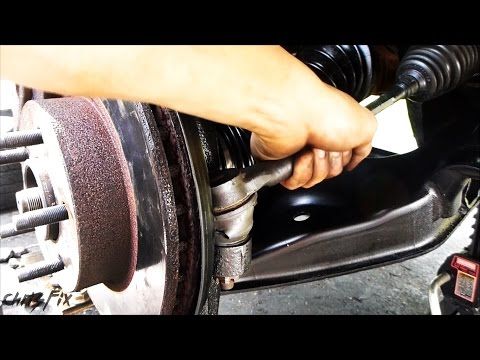 This seemingly insignificant element is of great importance; if it breaks, at best it will not be possible to start the car.
This seemingly insignificant element is of great importance; if it breaks, at best it will not be possible to start the car.
Timely inspection and replacement of the timing belt will help to avoid problems with a broken timing belt.
The belt itself is the connecting link between the crankshaft and camshaft. It ensures the timely opening of the valves in the engine, so that exactly as much fuel mixture enters the cylinders as needed.
Finding out that the timing belt has broken is easy, because it only happens while driving. The engine stalls instantly and may require a major overhaul.
Breakage can occur for the following reasons:
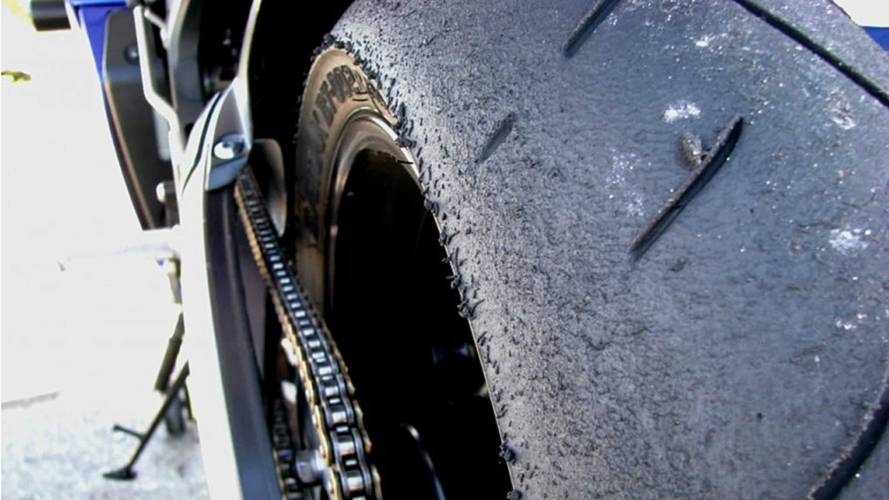 These elements carry out the tension of the belt, preventing it from flying off the teeth. Their untimely replacement can provoke premature abrasion of the belt. A jammed pump can lead to a similar result;
These elements carry out the tension of the belt, preventing it from flying off the teeth. Their untimely replacement can provoke premature abrasion of the belt. A jammed pump can lead to a similar result; In some situations, the belt does not break, but its teeth are completely worn out, because of which it simply cannot perform its functions.
The signs of a broken timing belt are very simple - the car suddenly stalls and can no longer be started, and when you try to turn on the ignition, a metallic knock is heard resulting from the impact of the pistons on the valves. A breakdown can cause serious problems, at high speed this is guaranteed to lead to valve failure, after which they will have to be changed.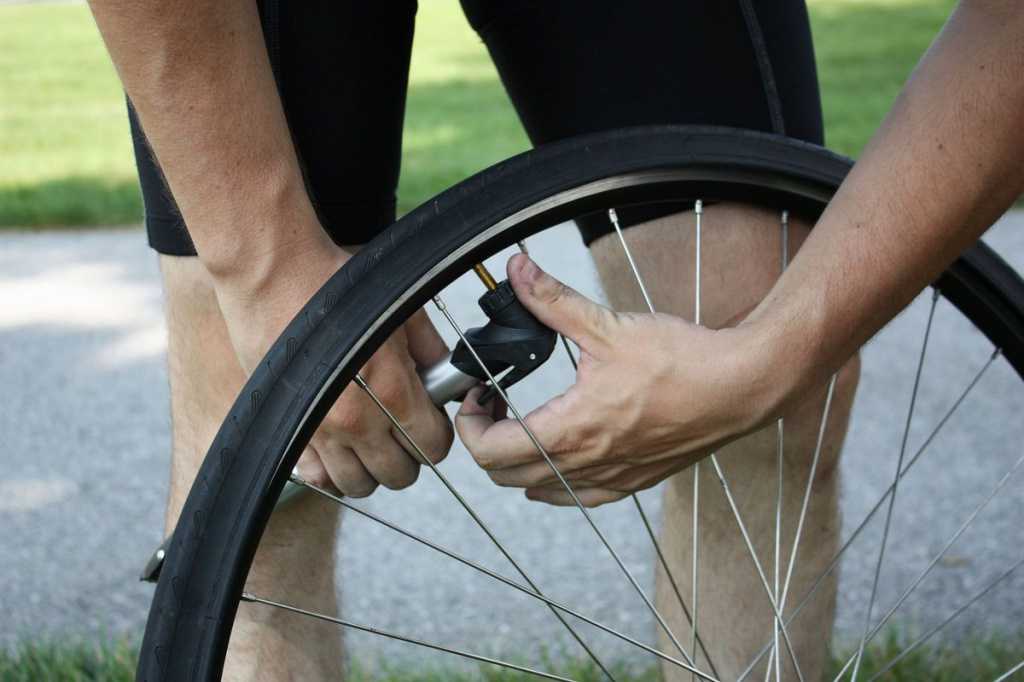 In the worst cases, the pistons themselves, pastel and gaskets get damaged.
In the worst cases, the pistons themselves, pastel and gaskets get damaged.
Due to the prevalence of the problem, some manufacturers make special recesses in the upper part of the piston to avoid “jam” of moving parts. In this case, if the alternator belt breaks on the road, it will be enough to simply replace it. Therefore, each driver is advised to keep a spare belt in the trunk and a set of tools necessary for its replacement.
If the material was interesting or useful for you, publish it on your social network page:
Example of valves after a broken timing belt
Add a comment
Top of page
Author: Mikhail Balandin
Sometimes this happens: a new alternator belt (additional units) or a timing belt fails much ahead of schedule. And then they say sadly: “My belt was gobbled up.” Yes, a very accurate word - gobbled up. The belt usually looks like this: as if someone had chewed it on one side. True, it happens otherwise: it looks intact, but it seems to be stretched out and slipping on the pulleys, because the tensioner stroke is no longer enough for it. Let's see who eats belts and what to do about it.
 We will not analyze their premature wear based on the design or method of manufacturing the belt. Let's approach the issue differently and consider three options: the belt is worn on the side, the belt is stretched, the belt is torn. V-ribbed beltToothed belt
We will not analyze their premature wear based on the design or method of manufacturing the belt. Let's approach the issue differently and consider three options: the belt is worn on the side, the belt is stretched, the belt is torn. V-ribbed beltToothed belt Lateral wear occurs both in timing belts (more often) and in poly-V-belts (less often). A stretched belt is most often poly-V-ribbed, and they can all break. Therefore, we will focus solely on the nature of the damage, on the basis of which we will consider its causes. Let's start with the most offensive and common damage: the belt wears out catastrophically quickly on the side.
Of course, the most obvious cause of wear on the edge of the belt is its contact with something that this edge should not come into contact with. Most often this happens due to the fact that one of the pulleys through which the belt passes is misaligned. In this case, the belt tries to slide to the side and rubs its sidewall against the edge of the pulley.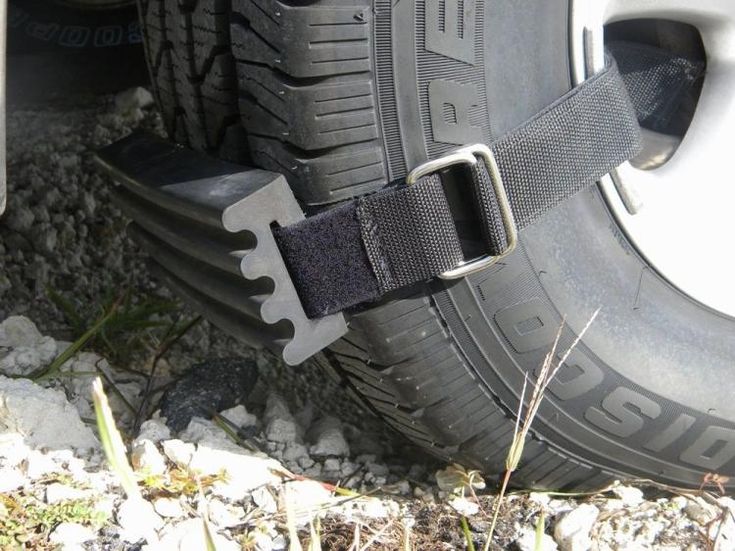 What to do? Look for a crooked pulley!
What to do? Look for a crooked pulley!
The most common cause of a misaligned pulley is the destruction of its bearing. The pulley gets upside down, the belt eats up from the side. The belt can withstand a slight distortion, but it should not exceed 1 mm per 100 mm of length. More than that is a crime.
The method of getting rid of this trouble is simple: you need to correct the misalignment of the pulley, return it to the same plane with the rest of the pulleys and the belt. And it would be quite simple, if not for one thing: it is not always clear which pulley is crooked. You can’t rely on the eye, because the belt rides away from a skew of several degrees, which is completely invisible from the outside. Therefore, you can go two ways.
The first is to start a cold engine, turn it off after ten minutes and very carefully touch the pulleys with your hands. All pulleys will be warm, but the guilty one usually heats up so that the hand cannot stand it. A little traumatic, but effective.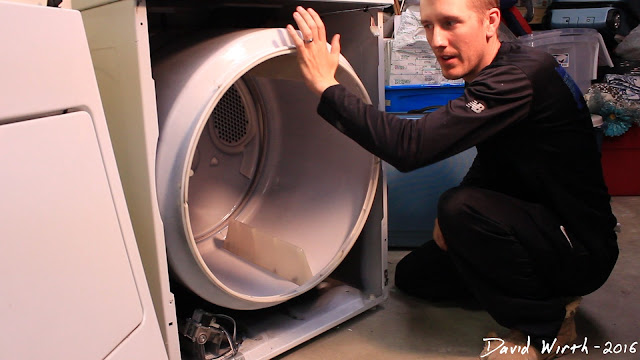
The second method is more effective: remove the belt and check all the pulleys in a row. If one spins by hand with jerks or effort, change the bearings. Unfortunately, finding a crooked pulley is sometimes difficult, but you still have to look for it: a sudden break in the belt is much more unpleasant. And it is best to start the search with those pulleys that have a damper (rubber layer). With age and mileage, it wears out, and under the load of the belt, the outer part of the pulley can warp. The bearing in this case may well be intact, but the pulley itself will stand up crooked, and with special luck it can also beat. In general, a methodical search is needed, otherwise there is no way.
The second reason is an abnormal pulley. This is more common on older cars: it is either difficult or expensive to look for stock, so they put something that approximately fits in place. For example, they put a pulley from a car in a different configuration. And the pulleys may differ in this case (for example, if the belt turns the air conditioning compressor or power steering pump, which are not in another configuration).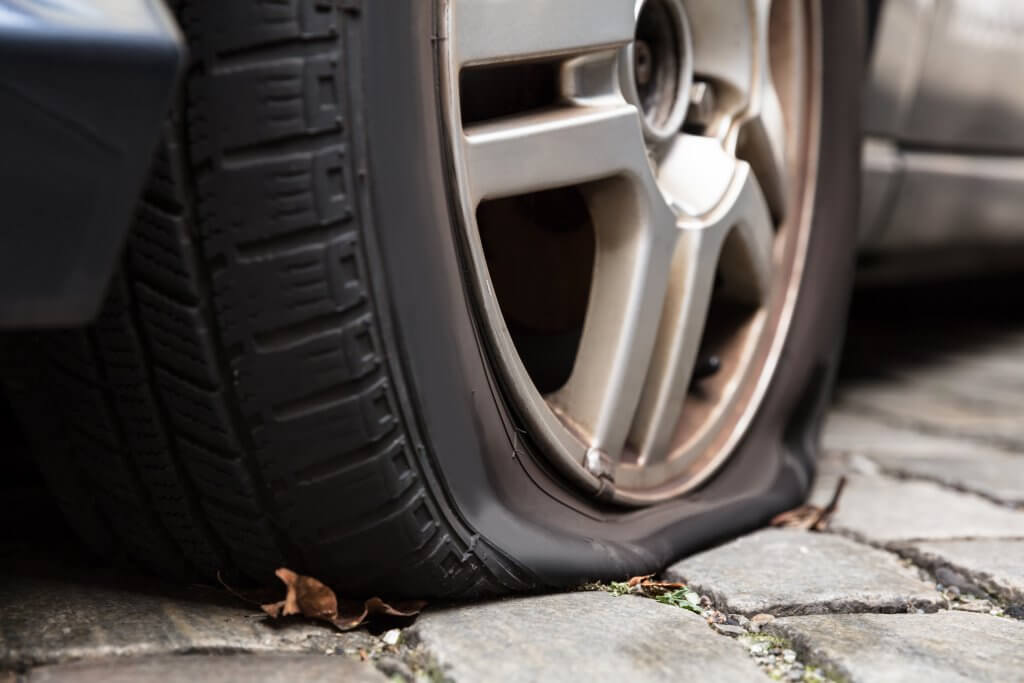 In this case, the belt can stand obliquely and also wear out on the side.
In this case, the belt can stand obliquely and also wear out on the side.
Sometimes the belt can simply catch on the sidewall of some kind of protection or casing. The case is rare, but you need to check, especially if this protection had to be removed recently.
Let's say right away: modern belts practically cannot stretch. If the belt is loose, it is most likely worn rather than stretched. There can be many reasons.
The most obvious is a defective belt. He is fake, counterfeit, singed. But let's say that after replacing both the second and third belts, the situation repeats itself: it wears out very quickly. What's the matter?
First of all - again in bearings. Something, somewhere, is spinning very badly, and the belt is slipping. Again, you can see if any of the pulleys is heating above normal, and then diagnose everything with the belt removed. And, of course, listen to the work of all bearings.
In general, if a new belt whistles, it cannot last long, by definition.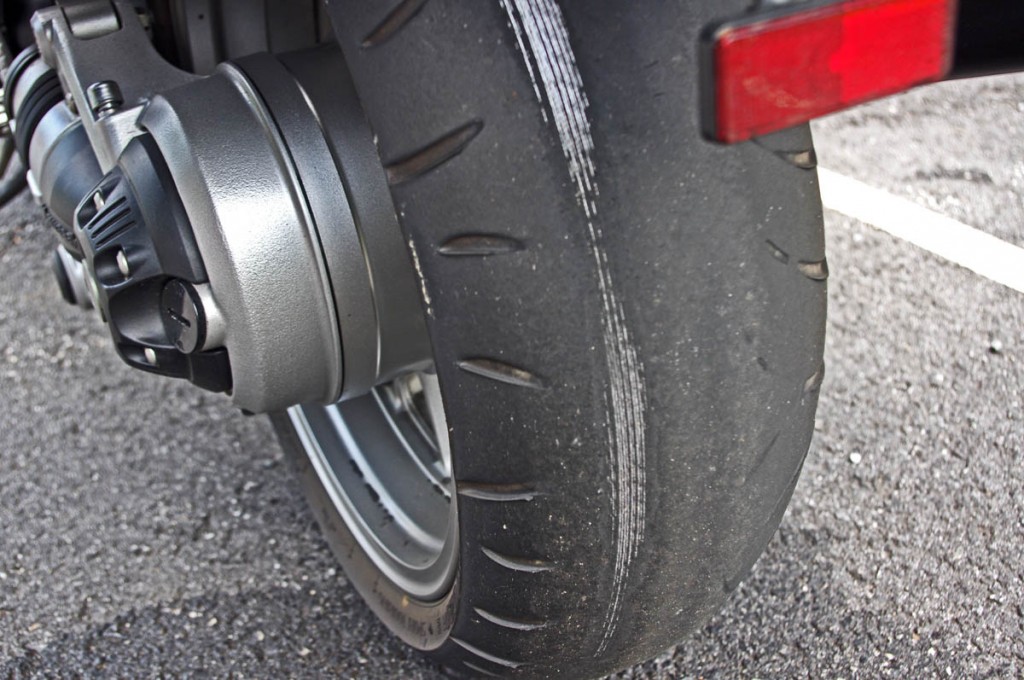 This means that it is experiencing an excessive load, which significantly reduces its resource. So here measures must be taken immediately after installing a new belt, and not wait for it to wear out quickly.
This means that it is experiencing an excessive load, which significantly reduces its resource. So here measures must be taken immediately after installing a new belt, and not wait for it to wear out quickly.
The second reason is dirt on the pulleys. If the car often drives off the asphalt, and it doesn’t have good anthers or protection from below, a noticeable amount of dust with small grains of sand and even pebbles settles on the belt and pulleys. All this reduces the life of the belts very quickly, so the cleanliness of the pulleys must always be monitored. Even if the car spends most of its life on asphalt.
The third reason is the wear of the rollers and pulleys themselves. The output on the roller is immediately visible: it has sides that the belt rubs against. This, of course, is unacceptable.
Pulley wear is more difficult to determine. Nevertheless, the ribbed belt grinds intensively on such a pulley, and if the situation is completely neglected, then the rivulets of the belt can generally get stuck in the grooves of the pulley. Therefore, if everything is running smoothly, all bearings are in good condition, and the belt on the old machine still wears out too quickly, it makes sense to check if the pulleys are worn out (especially the drive one on the crankshaft, which is considered immortal, but it is not).
Therefore, if everything is running smoothly, all bearings are in good condition, and the belt on the old machine still wears out too quickly, it makes sense to check if the pulleys are worn out (especially the drive one on the crankshaft, which is considered immortal, but it is not).
There are some other causes of rapid belt wear that can be called exotic (but plausible). They are also associated with the misalignment of the pulleys, but are caused by rare causes. For example, a crookedly installed pump. It happens that when replacing the pump (and not only it), the surfaces that are in contact with the pump plane are not cleaned. Okay, if it leaks from this skew, then everything is immediately clear. But our craftsmen are different, they can cover everything with some kind of sealant right through the mud, and then it will be more difficult to look for a skew.
And there are situations when the pulley is on a curved axle. The axle can bend, for example, from long work with a tight belt (especially if the axle is old). Such problems are solved in different ways. If it is possible to turn the axle, turn it so that the pulley is straighter. Usually it is difficult or impossible to do this, and then home-made half rings are used, which are clamped between the pulley bearing and the mating surface. Yes, misalignment can be corrected in this way, but often one or two belts break before that. However, a person with experience will still achieve his goal.
Such problems are solved in different ways. If it is possible to turn the axle, turn it so that the pulley is straighter. Usually it is difficult or impossible to do this, and then home-made half rings are used, which are clamped between the pulley bearing and the mating surface. Yes, misalignment can be corrected in this way, but often one or two belts break before that. However, a person with experience will still achieve his goal.
The belt very rarely does not start to whistle or squeak, but immediately breaks. It is clear that this is not about the timing belt (which cannot slip in principle, and in extreme cases it cuts its teeth), but about the drive belt. Most often this happens if there is either dirt or burrs on the rollers or pulleys. So there is only one way out - to check all surfaces. If there is a composite pulley, you need to check the welding of its halves, which can disperse and clamp the belt to a break.
With a wedge of some kind of roller or bearing, the belt rarely breaks, especially if it is new. In this case, he will slip, and it is simply impossible not to hear it.
In this case, he will slip, and it is simply impossible not to hear it.
A torn belt should not be thrown away immediately, but inspected from all sides. If there are traces of oil on it, you first need to understand where it came from on the belt. Oil shortens the life of belts very quickly, so first you need to fix the problem with its leakage, and then install a new belt.
And if there are dents on the inside of the belt, you have to look for where they came from. Most likely, the garbage that remained in the pulley is to blame. Before installing a new belt, all this must be thoroughly cleaned.
Well, one should not be surprised that some non-original belt quickly broke. Some manufacturers guarantee the operation of the belt for 120 thousand kilometers, and this is a lot. Not every analogue is able to work out so much, therefore, in case of abandoning the original, it is advisable to reduce the replacement intervals and not be surprised that the belts began to serve less. It's a shame, but almost always a cheaper belt does not last as long as an expensive original or a very high-quality analogue.
It's a shame, but almost always a cheaper belt does not last as long as an expensive original or a very high-quality analogue.
Poll
Have you ever had a belt break?
Your vote
Total votes:
practice
Articles / Used cars 5 reasons to buy and not to buy Toyota Fortuner II “Impeccable car”, “phenomenal cross-country ability”, “shaky suspension, hard steering, the engine inside bellows like a buffalo”, “huge miscalculations in terms of comfort”, “comfortable handsome man”, “very ... 1904 one 0 09.10.2022
Articles / Practice Look into the kingpin: what is a kingpin suspension, how to maintain it and why to inject The word "pivot" today seems to someone as archaic as "zipun", "endova" and "batog".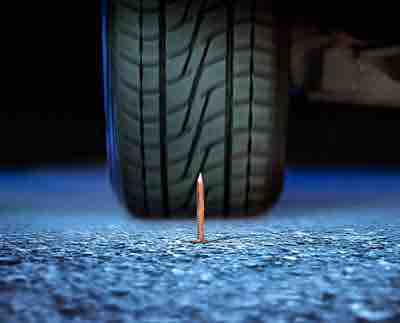 In fact, this is not so: the king pins have not left us yet, and it is likely that some will have to ... 991 7 0 07.10.2022
In fact, this is not so: the king pins have not left us yet, and it is likely that some will have to ... 991 7 0 07.10.2022
Articles / Used cars Along Route 60: The BMW 325i E36 Ownership Experience Getting a car from the cult road movie "Route 60" is not an easy task in our country. These are lengthy searches, and "parallel imports", and complex logistics, and years of painful waiting... 189eight 9 5 06.10.2022
Test drives / Test drive Haval Dargo vs Mitsubishi Outlander: the dog is barking, the stranger is coming In the Haval dealership in the south of Moscow, life is in full swing: buyers look at cars, communicate with managers and sign some papers. While I was waiting for the test Dargo, the same cross... 12896 7 157 09/13/2022
While I was waiting for the test Dargo, the same cross... 12896 7 157 09/13/2022
Test drives / Test drive Motor from Mercedes, emblem from Renault, assembly from Dacia: test drive of the European Logan 1.0 It would seem that what's new can be told about the second generation Renault Logan, known to every Russian taxi driver, as they say, up and down? However, this car has... 1129eight ten 41 08/13/2022
Test drives / Test drive Geely Coolray vs Haval Jolion: Free Cheese? If! Do you want to buy a car today with a full warranty, on credit at an adequate rate, without wild dealer markups? Now this is still a task, because a full-fledged chain of "representation - s.